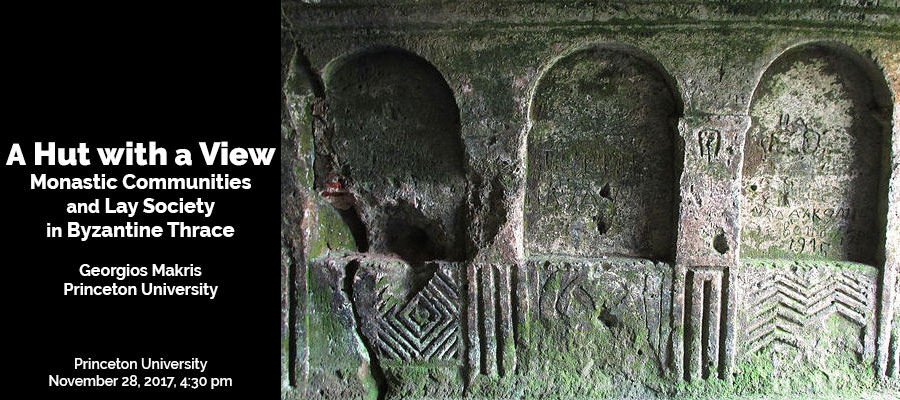A Hut with a View: Monastic Communities and Lay Society in Byzantine Thrace, lecture by Georgios Makris (Hannah Seeger Davis Postdoctoral Fellow, Hellenic Studies, Princeton University), Princeton University, November 28, 2017, 4:30 pm
Respondent: Jack Tannous, History
In this lecture, I will examine the history and material culture of monasticism in Thrace, the European hinterland of Constantinople, between the tenth and fourteenth centuries. Primarily concerned with important aspects of monastic life, including daily routine and living conditions, property ownership, and patronage as well as the modes of interaction with the laity, this lecture will offer a rare view of the landscape setting and architectural configuration of multiple monastic foundations across Thrace. In the Byzantine world, monasticism was a fundamental institution that touched the lives of virtually all inhabitants regardless of their financial or social status. In investigating the ties between Byzantine monastics and laity, it will be imperative to transcend the political boundaries that now divide Thrace into three modern nation-states: Bulgaria, Greece, and Turkey. Ultimately, by bringing together archaeological material and textual sources, I will attempt to identify and decipher key facets of the cultural and economic relation between hinterland and center, between Thrace and Constantinople.
Georgios Makris holds a B.A. in History and Archaeology from the University of Athens and a Ph.D. in Byzantine Studies from the University of Birmingham. He has held fellowships at the Dumbarton Oaks Research Library and Collection (Junior Fellow, 2014-2015) and at Koç University’s Research Center for Anatolian Civilizations in Istanbul (Fellow, 2015-2016). Makris was previously a post-doctoral research scholar in the Department of Art History and Archaeology at Columbia University (2016-2017). He is currently working on his first monograph on the life-cycle, topography, and spatial composition of monastic communities in the region of Thrace, the hinterland of Constantinople, from the tenth to fourteenth centuries. In his work, Makris follows an interdisciplinary methodology which brings together the systematic analysis of texts associated with religious institutions with the results of archaeological fieldwork in Greece and Turkey.
